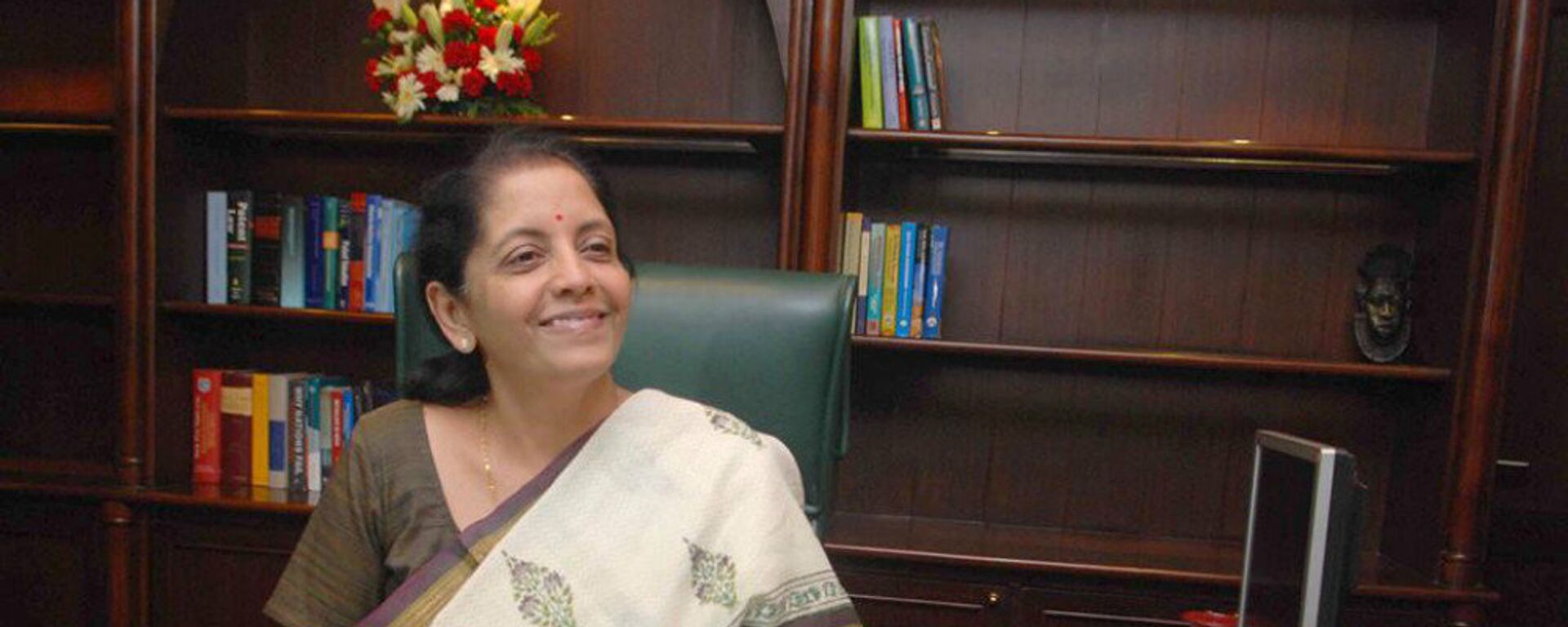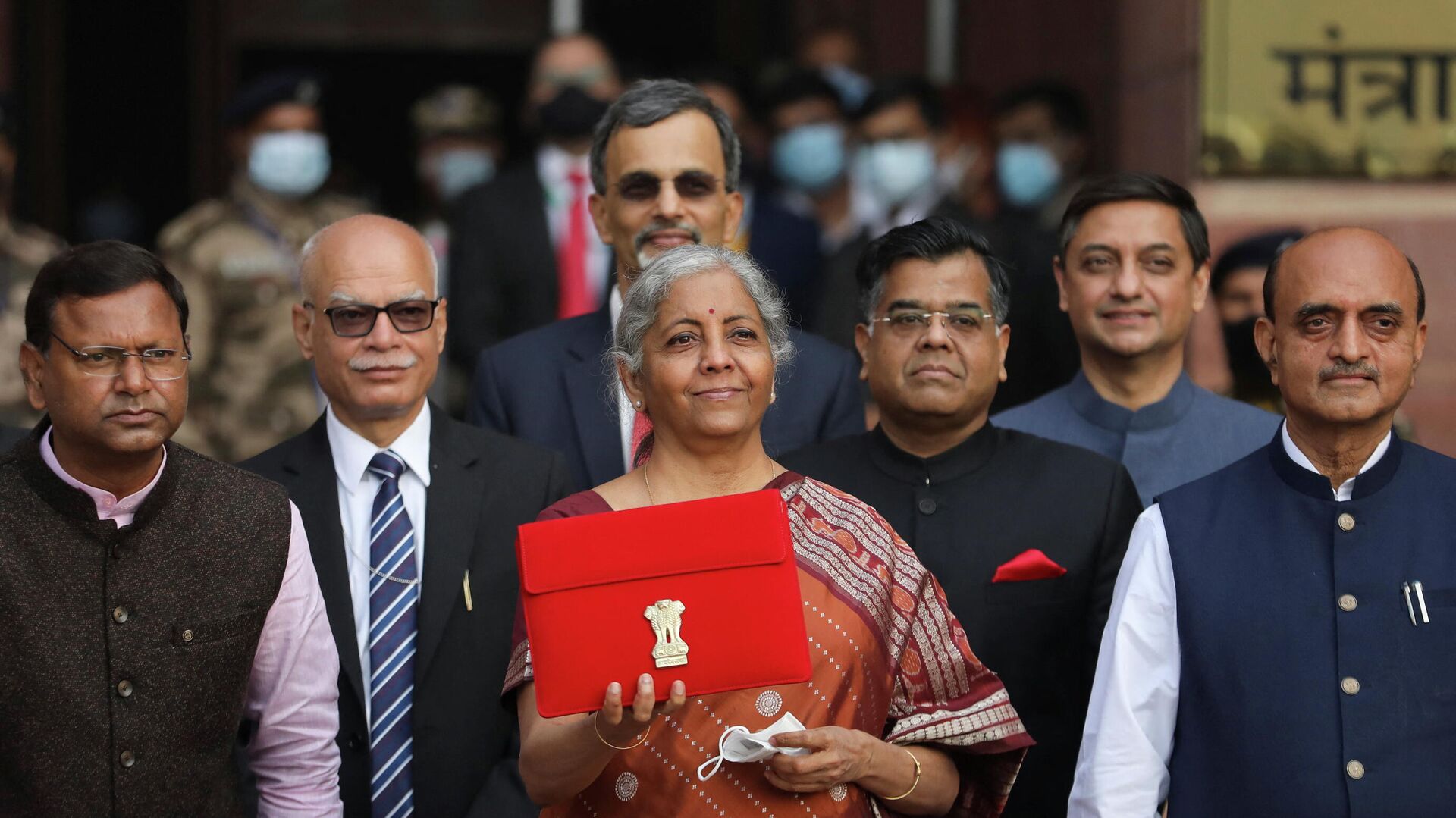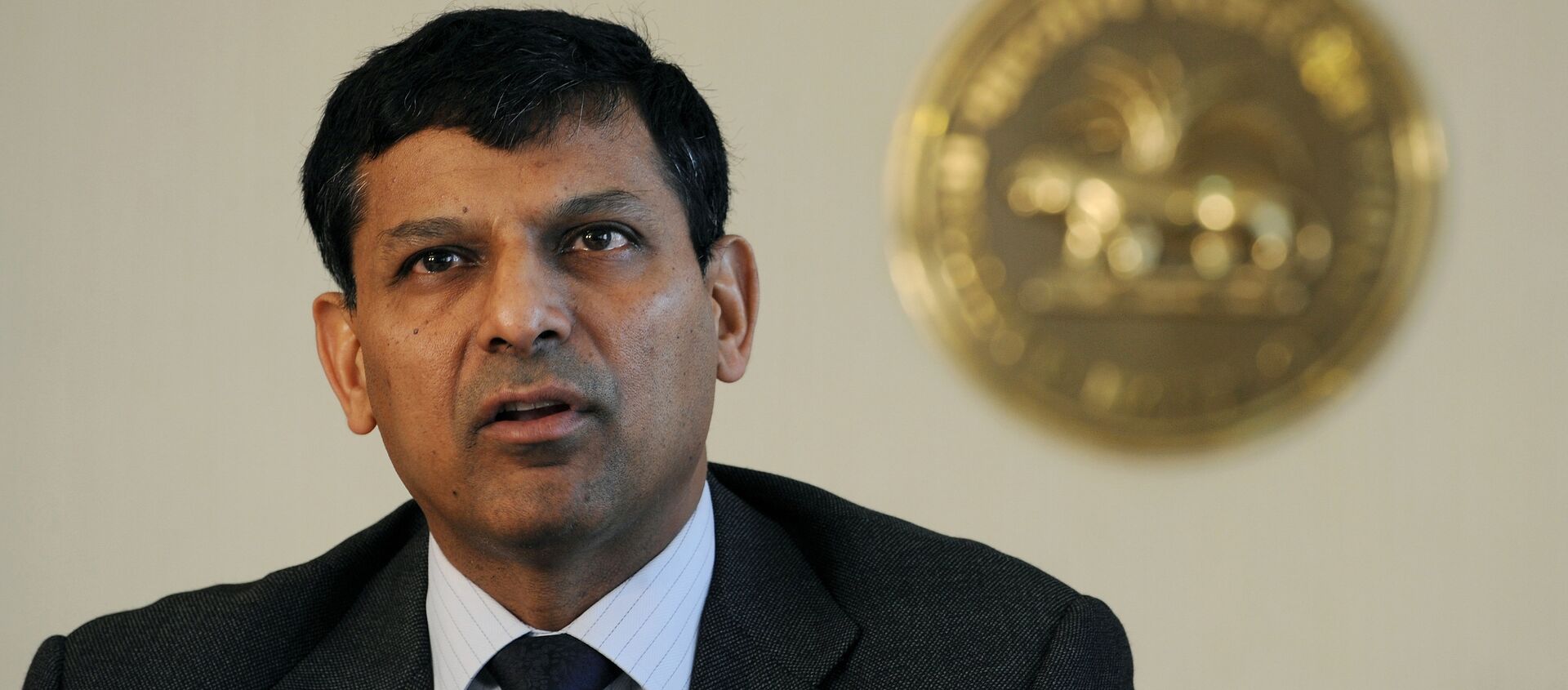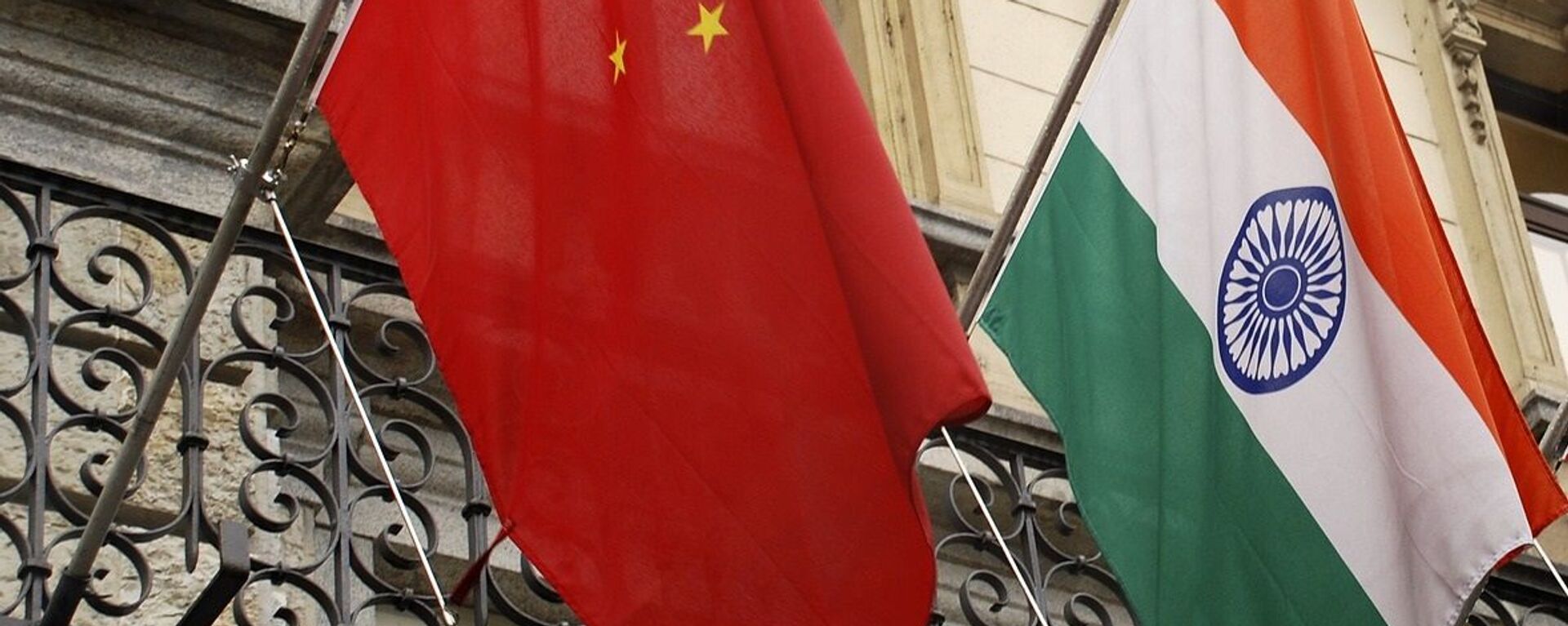https://sputnikglobe.com/20220202/budget-stimulus-on-capital-expenditure-makes-india-attractive-to-foreign-investors-brics-experts-1092690102.html
Budget Stimulus on Capital Expenditure Makes India 'Attractive' to Foreign Investors: BRICS’ Experts
Budget Stimulus on Capital Expenditure Makes India 'Attractive' to Foreign Investors: BRICS’ Experts
Sputnik International
The Indian government announced its annual budget for the 2022-23 financial year on 1 February. A sharp rise in federal capital expenditure (capex) to fund... 02.02.2022, Sputnik International
2022-02-02T18:00+0000
2022-02-02T18:00+0000
2022-02-02T18:00+0000
supply chain
foreign direct investment (fdi)
narendra modi
china
anti-dumping
https://cdn1.img.sputnikglobe.com/img/07e6/02/02/1092696152_0:112:2763:1666_1920x0_80_0_0_fe63dd6e5de8a85948bf6daba93d98d8.jpg
India’s finance minister Nirmala Sitharaman said while presenting the federal budget for the forthcoming 2022-23 financial year that the government will “lead the way” and “come forward” to rescue the COVID-battered economy.“And we have unhesitatingly come to the fore which is how we can justify the rise in capital expenditure from nearly $73 billion last year to around $100 billion,” she said.However, the government’s political opponents criticised the federal budget for not doing enough to solve the issue of job creation (India’s unemployment rate has worsened during the pandemic) and not significantly increasing spendings on healthcare and the social sector.Former finance minister and Congress politician Palaniappan Chidambaram pointed out at a press conference after the budget speech that the COVID pandemic has not only led to greater unemployment, but has also slashed income per head which has had the knock-on effect of cutting per capita spending and widening the poverty ratio as well as exacerbating inflationary pressure.Sputnik has spoken to economists Dr. BBL Madhukar and Ashok Kumar Singh, both of the BRICS Chamber of Commerce and Industry (CCI), an Indian non-profit with a stated goal to promote commerce and industry among the Brazil, Russia, India, China and South Africa, the five nations making up the bloc.Singh is vice-chairman of BRICS CCI and Madhukar is its director-general.Edited excerpts:Sputnik: What are the high points of this year's budget as far as foreign investors are concerned?Dr BBL Madhukar: There are many high points for foreign investors, as shared in the budget presentation by the finance minister Nirmala Sitharaman. There are several investment opportunities for foreign entities in sectors such as infrastructure, education, financial technology (fintech), electronics, engineering, as well as steel and minerals for a start.Then, foreign education providers have now been allowed to set up campuses and offer courses in an array of subjects at Gujarat state’s [Gujarat International Finance Tec] GIFT City. These campuses won’t be bound by domestic regulations, or the laws governing Indian universities.On the side of infrastructure and trade, the government’s plan to start a new scheme - PM Development Initiative for the North-East (PM-devINE) - would increase investment opportunities in the north-eastern part of the country. Sputnik: The government this year has announced a year-on-year increase of 35 per cent in its capital expenditure (capex) spending meant to fund big-ticket infrastructure projects. The finance minister has argued that this sort of government stimulus will attract private investors. Do you agree with this assessment?Madhukar: Certainly, government stimulus on capital expenditure will make the country more attractive to foreign investors. This would be like a marriage between public and private investments meant to drive inclusive growth and create opportunities for investment and overall development.Similarly, many state governments have also rolled out attractive schemes to support foreign firms wanting to invest in India.Sputnik: There has been a push by Prime Minister Narendra Modi’s government to split the economy from China's, although Beijing once again emerged as India’s largest trading partner last year. In this year’s budget, the finance minister scrapped anti-dumping duties on certain steel and aluminium products. Does that favour big steel producers such as China, which has been voicing concerns over New Delhi’s trade policy towards it?Madhukar: The move to revoke the anti-dumping on imports such as stainless steel, coated steel flat products, bars of alloy steel and high-speed steel, which are imported from many countries, is aimed at containing high domestic prices of metals as well as promoting domestic manufacturing.Sputnik: What more could the Indian government have done to soothe the concerns of foreign investors. Also, how does India correct its image of perceived reluctance to enter into free trading blocs such as the Regional Comprehensive Economic Partnership (RCEP) as well as bilateral FTAs?Ashok Kumar Singh: Some of the initiatives designed to end foreign investor grievances have already been undertaken, including fast-tracking the settlement of contractual disputes. Efforts to reduce import tariffs to benefit importers are also ongoing. Then, for MSMEs, the government is working towards creating infrastructural as well as other mechanisms of support.As far as joining trade blocs and FTAs are concerned, these are evolving decisions for any country. Sputnik: There has been a push by the government towards achieving atmanirbhata (self-reliance) in industry by minimising imports and expanding the manufacturing base to become a more export-oriented economy. However, there have also been concerns around rising debt levels, increasing trade deficit as well as foreign investments.Judging by the government stimulus to domestic industry in the budget, do you expect the Indian government to guard the domestic industry more scrupulously in a post-COVID scenario?Ashok Kumar Singh: I believe foreign investment are the key to realise Prime Minister Modi’s vision of achieving economic self-reliance.Then, that India is striving to become a global supply hub is evident from schemes such as Gati Shakti (a federal scheme launched last year and aimed at ensuring that overall logistical costs are reduced).I also feel that the government is rightly focused on ensuring that it is easy to do business here to enhance its economic goals further.
https://sputnikglobe.com/20220201/finance-minster-delivers-budget-2022-an-economic-blueprint-for-india-from-75-to-100-1092657896.html
https://sputnikglobe.com/20200430/india-has-opportunity-in-shaping-dialogue-in-global-economy-ex-rbi-governor-says-1079141711.html
https://sputnikglobe.com/20210528/decoupling-indias-economy-from-chinas-tops-agenda-as-indian-fm-meets-us-lawmakers-1083015648.html
https://sputnikglobe.com/20200630/india-must-return-rural-economy-to-the-forefront-of-a-national-growth-trajectory---experts-1079749005.html
china
Sputnik International
feedback@sputniknews.com
+74956456601
MIA „Rosiya Segodnya“
2022
News
en_EN
Sputnik International
feedback@sputniknews.com
+74956456601
MIA „Rosiya Segodnya“
Sputnik International
feedback@sputniknews.com
+74956456601
MIA „Rosiya Segodnya“
supply chain, foreign direct investment (fdi), narendra modi, china, anti-dumping
supply chain, foreign direct investment (fdi), narendra modi, china, anti-dumping
Budget Stimulus on Capital Expenditure Makes India 'Attractive' to Foreign Investors: BRICS’ Experts
The Indian government announced its annual budget for the 2022-23 financial year on 1 February. A sharp rise in federal capital expenditure (capex) to fund India's infrastructure needs has emerged as the major excitement of the budget, as the government marginally cut its spending estimates for the social sector.
India’s finance minister Nirmala Sitharaman said while presenting the federal budget for the forthcoming 2022-23 financial year that the government will “lead the way” and “come forward” to rescue the COVID-battered economy.
“We want to undertake the public investment and asset creation, public infrastructure expenditure, and it is only by doing this that we feel there will be an escalation of private investments,” Sitharaman told India’s state broadcaster after her budget speech.
“And we have unhesitatingly come to the fore which is how we can justify the rise in capital expenditure from nearly $73 billion last year to around $100 billion,” she said.
However, the government’s political opponents criticised the federal budget for not doing enough to solve the issue of job creation (India’s unemployment rate has worsened during the pandemic) and not significantly increasing spendings on healthcare and the social sector.
Former finance minister and Congress politician Palaniappan Chidambaram pointed out at a press conference after the budget speech that the COVID pandemic has not only led to greater unemployment, but has also slashed income per head which has had the knock-on effect of cutting per capita spending and widening the poverty ratio as well as exacerbating inflationary pressure.
“The government behaves and acts as though it is on the right path and has delivered on the issues that matter to the common people. This is false. This is also bull-headed obduracy. This also reflects the government’s contemptuous disregard of the burdens and sufferings of the people,” Chidambaram remarked.

1 February 2022, 19:01 GMT
Sputnik has spoken to economists Dr. BBL Madhukar and Ashok Kumar Singh, both of the BRICS Chamber of Commerce and Industry (CCI), an Indian non-profit with a stated goal to promote commerce and industry among the Brazil, Russia, India, China and South Africa, the five nations making up the bloc.
Singh is vice-chairman of BRICS CCI and Madhukar is its director-general.
Sputnik: What are the high points of this year's budget as far as foreign investors are concerned?
Dr BBL Madhukar: There are many high points for foreign investors, as shared in the budget presentation by the finance minister Nirmala Sitharaman. There are several investment opportunities for foreign entities in sectors such as infrastructure, education, financial technology (fintech), electronics, engineering, as well as steel and minerals for a start.
Then, foreign education providers have now been allowed to set up campuses and offer courses in an array of subjects at Gujarat state’s [Gujarat International Finance Tec] GIFT City. These campuses won’t be bound by domestic regulations, or the laws governing Indian universities.
I also believe that extending the exemptions on custom duties for another year for MSME (micro, small and medium enterprises) and announcing custom duty exemptions for certain consumer electronic devices would give a boost to manufacturing them in the country.
On the side of infrastructure and trade, the government’s plan to start a new scheme - PM Development Initiative for the North-East (PM-devINE) - would increase investment opportunities in the north-eastern part of the country.
Another highlight of the budget was the announcement to replace the existing Special Economic Zones (SEZs) Act with a new legislation which would allow states to become partners in developing enterprise and service hubs. This will cover all large existing and new industrial enclaves to utilise to the best of its ability infrastructure and enhance India’s export competitiveness.
Sputnik: The government this year has announced a year-on-year increase of 35 per cent in its capital expenditure (capex) spending meant to fund big-ticket infrastructure projects. The finance minister has argued that this sort of government stimulus will attract private investors. Do you agree with this assessment?
Madhukar: Certainly,
government stimulus on capital expenditure will make the country more attractive to foreign investors. This would be like a marriage between public and private investments meant to drive inclusive growth and create opportunities for investment and overall development.
There are various schemes and incentives which have been offered to investors provided that they invest in India. These incentives will support organisations while they buy or maintain fixed assets, including land, buildings and equipment.
Similarly, many state governments have also rolled out attractive schemes to support foreign firms wanting to invest in India.
Sputnik: There has been a push by Prime Minister Narendra Modi’s government to split the economy from China's, although Beijing once again emerged as India’s largest trading partner last year. In this year’s budget, the finance minister scrapped anti-dumping duties on certain steel and aluminium products. Does that favour big steel producers such as China, which has been voicing concerns over New Delhi’s trade policy towards it?
Madhukar: The move to revoke the anti-dumping on imports such as stainless steel, coated steel flat products, bars of alloy steel and high-speed steel, which are imported from many countries, is aimed at containing high domestic prices of metals as well as promoting domestic manufacturing.
We have seen that governments often initiate anti-dumping steps to determine whether the domestic industry has been hurt by a surge in low-cost imports. These steps are meant to ensure fair trade and provide a level-playing field to the domestic industry. They are not a measure to restrict imports or cause an unjustified increase in the cost of products.
Sputnik: What more could the Indian government have done to soothe the concerns of foreign investors. Also, how does India correct its image of perceived reluctance to enter into free trading blocs such as the Regional Comprehensive Economic Partnership (RCEP) as well as bilateral FTAs?
Ashok Kumar Singh: Some of the initiatives designed to end foreign investor grievances have already been undertaken, including fast-tracking the settlement of contractual disputes. Efforts to reduce import tariffs to benefit importers are also ongoing.
Then, for MSMEs, the government is working towards creating infrastructural as well as other mechanisms of support.
India has also been opening up some of the previously guarded sectors of its economy to foreign investors. As we heard in the budget speech, the FDI limit in the insurance sector has been raised to 74 percent.
As far as joining trade blocs and FTAs are concerned, these are evolving decisions for any country.
Irrespective of India joining a trade bloc or not, its trade relations with other countries are only strengthening, as shown in the past two years despite constraints imposed by the COVID pandemic.
Sputnik: There has been a push by the government towards achieving atmanirbhata (self-reliance) in industry by minimising imports and expanding the manufacturing base to become a more export-oriented economy. However, there have also been concerns around rising debt levels, increasing trade deficit as well as foreign investments.
Judging by the government stimulus to domestic industry in the budget, do you expect the Indian government to guard the domestic industry more scrupulously in a post-COVID scenario? Ashok Kumar Singh: I believe foreign investment are the key to realise Prime Minister Modi’s vision of achieving economic self-reliance.
India has always maintained a good mix of domestic industry and reliance on international trade reliance. We are witnessing an emphasis on strengthening of roads and connectivity infrastructure, supportive tax structures and a focus on improving productivity as well as sunrise opportunities and climate action. These are all steps which will surely boost collaboration in both domestic and international markets.
Then, that India is striving to become a global supply hub is evident from schemes such as Gati Shakti (a federal scheme launched last year and aimed at ensuring that overall logistical costs are reduced).
I also feel that the government is rightly focused on ensuring that it is easy to do business here to enhance its economic goals further.







